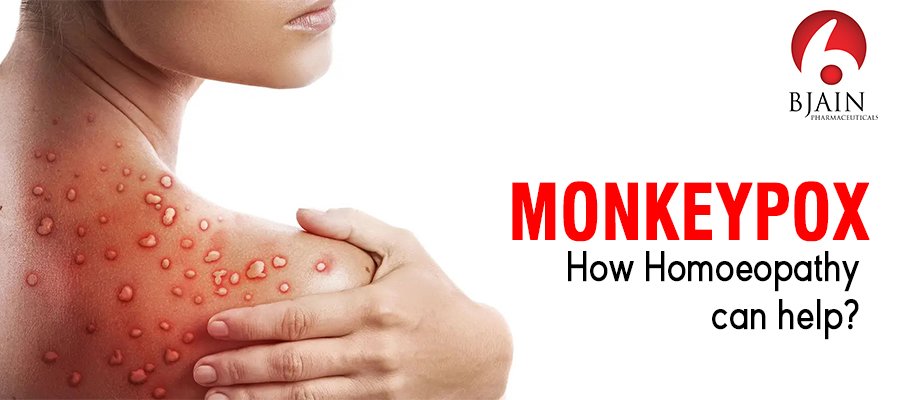The World Health Organization announced monkeypox as a global health emergency on 14 August. Before this, the spread of the virus remained mostly restricted to the Congo, accounting for more than 96% of the cases recorded.
What is Mpox (Monkeypox)?
Mpox is a contagious illness prompted due to the monkeypox virus infection. It might lead to a severe rash, swollen lymph nodes, and fever. Most individuals recover completely, but a few get critically ill.
The monkeypox virus is an enclosed double-stranded DNA belonging to the Orthopoxvirus genera in the family Poxviridae, which also contains variola, cowpox, vaccinia, and other viruses.
The monkeypox virus was identified in Denmark in 1958 in monkeys housed for study, and the case zero of mpox was a nine-month-old infant from the Congo.
Mpox can be transmitted from one person to another or, on rare occasions, from animal to human. Following the elimination of smallpox in 1980 and the discontinuation of the smallpox vaccine globally, mpox progressively spread over central, east, and West Africa. A pandemic occurred from 2022 to 2023. The virus’s native reservoir is unclear, however, some small animals, including squirrels and monkeys, are vulnerable.
What are the different strain types of the Mpox (Monkeypox) virus?
There are two kinds of Mpox viruses: Clade I and Clade II.
Clade I leads to more severe sickness and mortality. Some breakouts took the lives of up to 10% of those infected, however recent breakouts have had fewer deaths. Clade I is indigenous to the Central African region.
Clade II is responsible for the worldwide breakout that started in 2022. Clade II Mpox infections have less serious symptoms. Over 99.9% of the population survives. Clade II is indigenous to West Africa.
Both variants of the virus may propagate via:
- Direct interactions with sick animals.
- Close touch (such as an intimate encounter) with someone who has Mpox.
- Close interaction with tainted items.
What are the predisposing risk factors for severe illness?
Although Mpox is not fatal, certain individuals could be susceptible to becoming very sick, including:
- Individuals with significantly reduced immune responses.
- Babies younger than one
- People who have had eczema before
- Women who are pregnant
What are the symptoms of the Mpox virus?
Mpox symptoms normally appear within a week to three after infection and continue for the next 2 to 4 weeks. The typical signs include:
- Rash: Mpox has a unique rash that starts with flat sores and progresses to fluid-packed blisters that can be irritating or painful. These lesions gradually harden and drop off after they recover.
- Temperature: A high temperature is typically associated with the rash.
- Many people have frequent headaches and muscular pains.
- Lymphadenopathy (swollen lymph nodes) is another typical symptom.
- Exhaustion: An overall feeling of lethargy or exhaustion is common.
How can we prevent Mpox?
To avoid infection or transmission of the Mpox virus, follow these steps:
- Prevent close contact with someone who has a rash that resembles Mpox.
- Avoid touching clothing, linens, blankets, or any other things that have come into the vicinity of a contaminated animal or human.
- Separate persons with Mpox from healthy folks.
- After touching an infected individual or animal, thoroughly clean your hands afterward with soap and water. When water and soap are not available, apply a hand sanitizer with alcohol.
- Keep distance from animals that may have the infection.
How can Mpox (Monkeypox) be treated?
The majority of mpox patients’ treatment focuses on symptom relief. Care may involve treating skin damage caused by the mpox rash, consuming plenty of fluids to keep stool smooth, and managing discomfort.
Homeopathic medicines for the management of Monkeypox (Mpox)
Homeopathic medicines work on the principle of individualization and totality of symptoms which means the medicines are prescribed based on the complete disease picture and uniqueness of each patient. Every disease presents itself differently in every person because every person should be prescribed medicines according to that. In cases of Monkeypox, homeopathy can be given based on their particular symptoms. No medicine should be taken without a homeopathic physician’s prescription. These are a few medicines that can be indicated in cases of monkeypox.
Mercurius solubilis: It is beneficial for lymph gland expansion, unpleasant sweating, particularly at night, profuse salivation with thirst, and recurrent mouth and throat ulcers. The symptoms worsen when exposed to chilly, wet surroundings, at nighttime from the heat of the bed, or during sweating.
Rhus toxicodendron: It is appropriate for treating situations in which skin is red, inflamed, and itchy, with vesicular herpes, or erysipelas, burning, a predisposition for scale development, and glandular enlargement. Fever can cause severe muscle discomfort that worsens at rest and improves with movement and external warming.
Malandrinum: This drug is well-recognized as a homeopathic smallpox prophylaxis. The outermost layer of skin is dry, scaly, and itchy, with rashes on both arms and legs that worsen in cold temperatures and after bathing. Scabs on the top lip can cause stinging discomfort when scraped off. There might be bony growths on the skin. The toes usually feel burned and itch badly.
Variolinum: This medication is intended to prevent and cure smallpox-like symptoms. The skin is heated and dry, with pustules. There is an elevated temperature, great radiating heat, and copious, foul-smelling perspiration. The breathing is obstructed, as well as a persistent cough with viscid, bloody mucus.
Cantharis: It can used to treat complaints such as Vesicular eruptions, with burning and itching. For erysipelas, vesicular type, with great restlessness. Indicated in fever with cold hands and feet; cold sweat. Soles burn.
Mercurius solubilis: It is beneficial for vesicular and pustular eruptions. Ulcers, are irregular in shape, edges undefined. Pimples around the main eruption. Itching, worse from the warmth of the bed. Fever with profuse perspiration without relief. Creeping chilliness, worse in the evening and into the night.
Echinacea angustifolia: It is appropriate for recurring boils and carbuncles-like eruptions. Lymphatics enlarged. Chilliness, with nausea. Fever with cold flashes all over back.
Conclusion:
MonkeyPox was declared a health emergency throughout the world. It first became an epidemic in 2022 but was mostly contained in certain geographical areas only. This time the symptoms are less virulent but its rate of infection is higher. Considering the bandwidth of disease, it requires immediate community attention and proper management. Homeopathy can be used in the management of symptoms associated with monkeypox without any doubt. However, they should be prescribed only by a homeopathic practitioner and self-medication should be avoided.

Dr Aditi
Dr Aditi (BHMS) from NHMC Delhi, HMO ( Chandigarh Administration), Ex- SRF ( CCRH ), currently doing a research study of effect of Homoeopathic medicines in Mother and Child Health care in Chandigarh.


